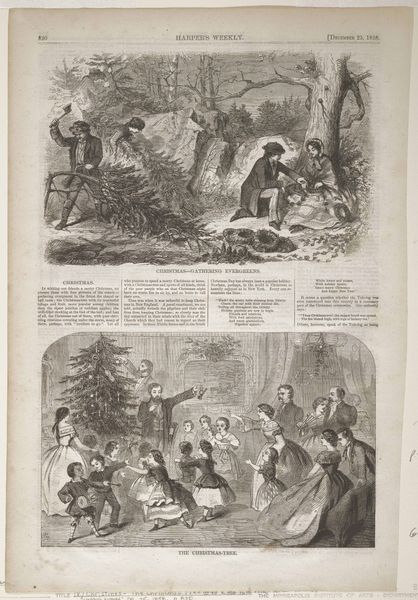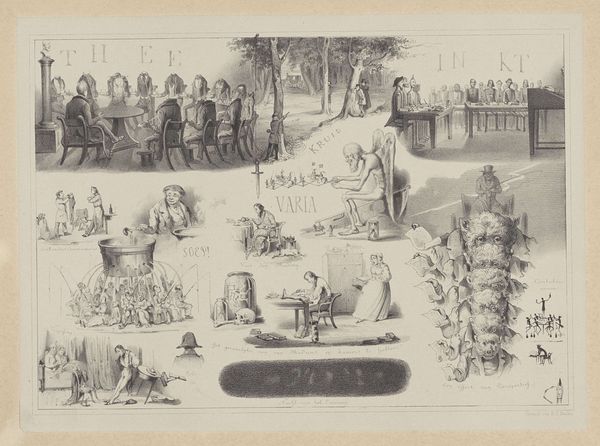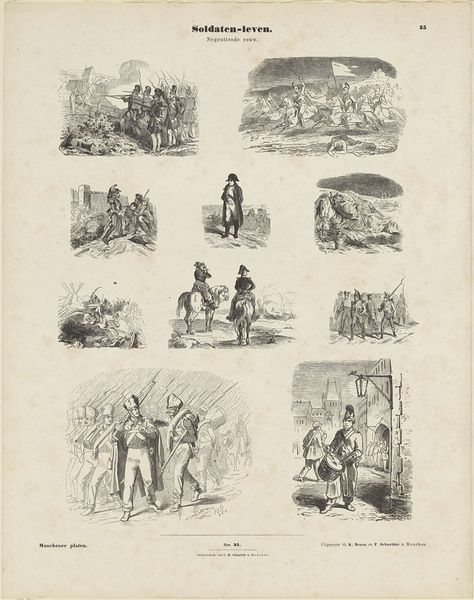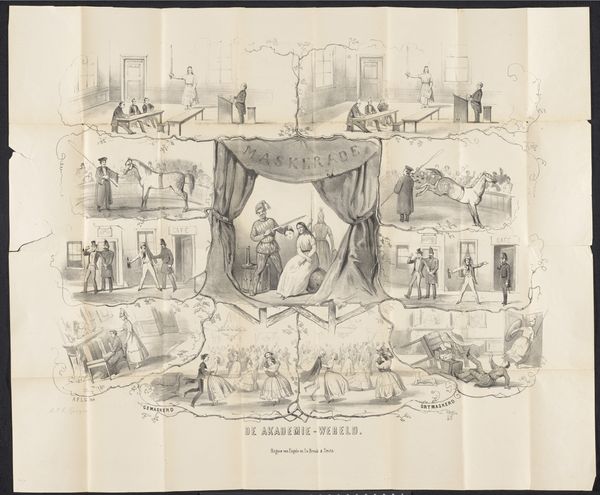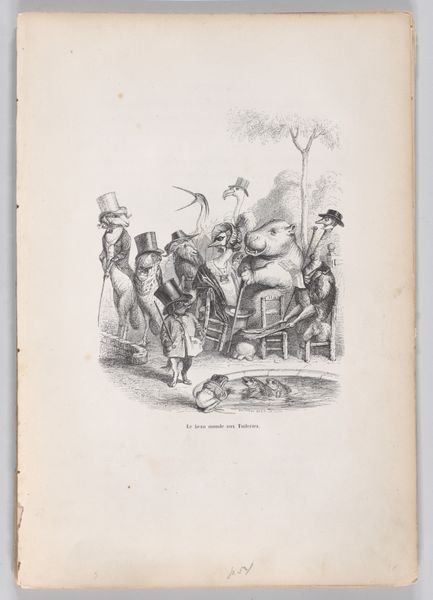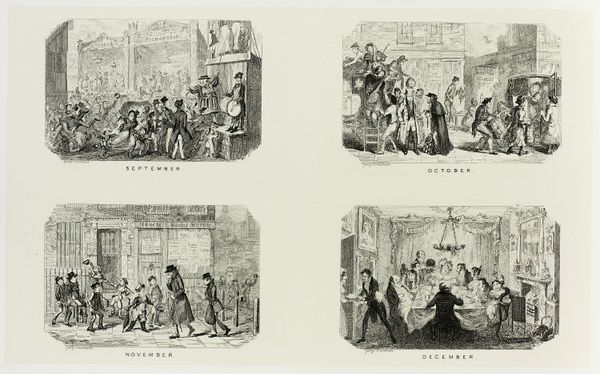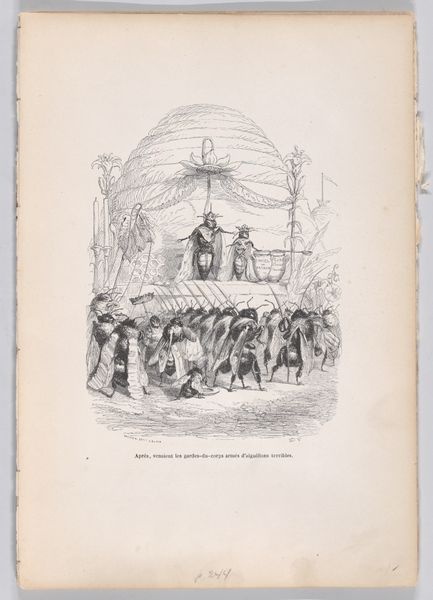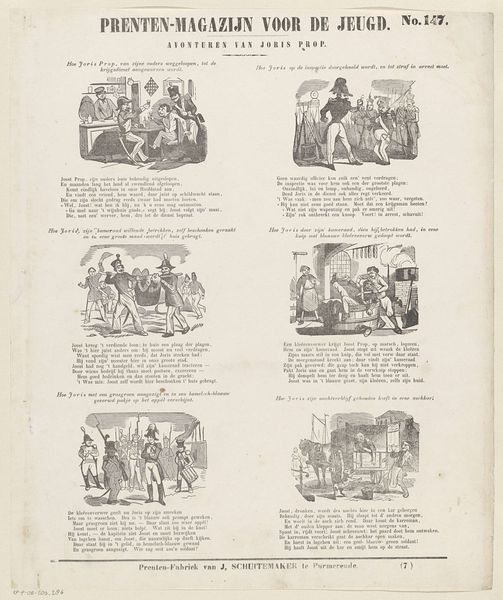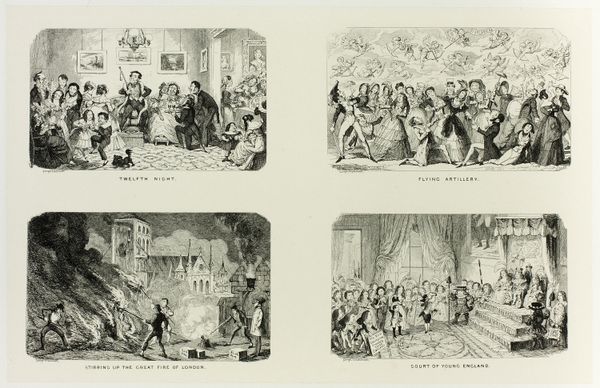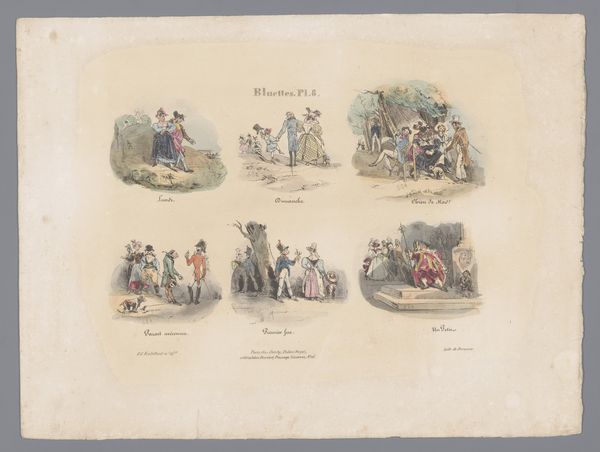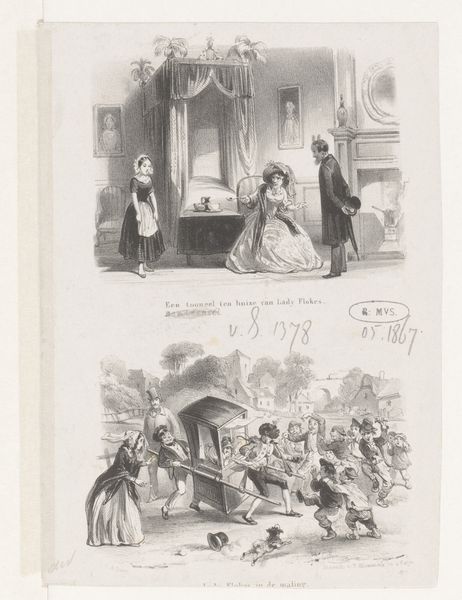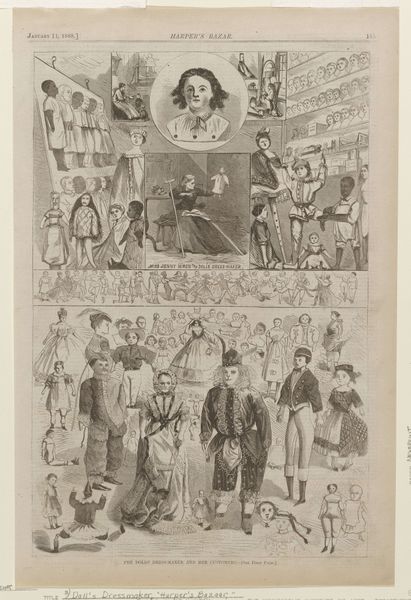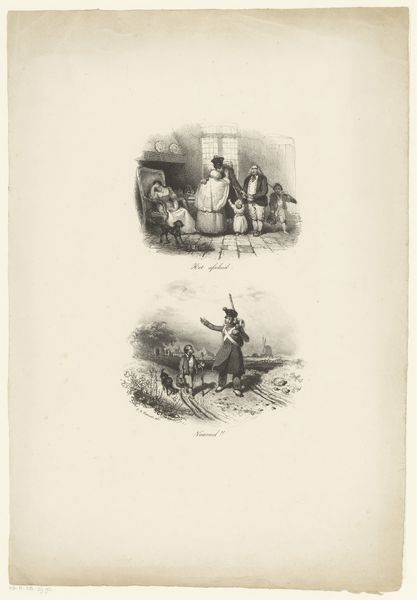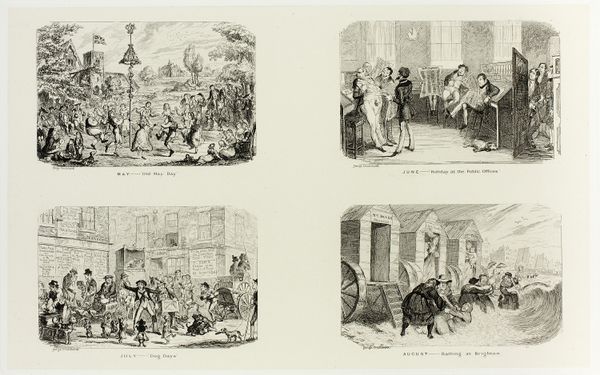
Dimensions: height 260 mm, width 170 mm
Copyright: Rijks Museum: Open Domain
Curator: Ah, yes, here we have "Quakers en Methodisten in Amerika," created between 1842 and 1887 by Carel Christiaan Antony Last. It's an engraving, showing scenes of Quaker and Methodist gatherings in America. Editor: What immediately strikes me is the stark contrast between the two groups depicted. One, inside what looks like a very austere meeting hall, bodies in repetitive movement; the other, nestled in what appears to be a vibrant, if equally austere, outdoor space. It really underscores how different their practices must have been. Curator: Exactly! And that's what makes this print so fascinating. Last captures the essence of these religious movements. The Quakers, known for their emphasis on inner spiritual experience, are shown engaging in some sort of expressive dance or movement, seemingly possessed by divine experience. Editor: What strikes me too is the artist's hand here: it looks very labor intensive to make this scene with so much detail in engraving. Do we know anything about how these prints were circulated or used, about the economy or system they fit within? It's easy to imagine it being quite laborious to mass produce for widespread sale. Curator: Indeed, each mark is meticulously placed. Prints like these played a crucial role in disseminating information and shaping public perceptions of various cultures and groups. Think of it as visual journalism of the time. He is bringing the practices of religious gatherings into public view. I imagine, a very judgmental public. Editor: Absolutely. I keep coming back to the level of detail. Looking at it from a materials perspective, what would have been required in terms of resources, labor and machinery? Was there division of labor here, and how many hands did it go through? These questions change how we read its commentary or critique. Curator: It's quite humbling to think of the labor involved! For me, it enriches the print's inherent meaning. Each line adds to the feeling of precision, of wanting to depict these spiritual moments accurately, as well as stirring up our sense of curiosity about how other people experience the Divine. Editor: Exactly, understanding those material processes is crucial, because they reveal how cultural knowledge was manufactured, shared, and perhaps controlled during that time. Curator: Well said. This piece invites us to look closer, reflect on our own preconceived notions, and see the diverse tapestry of faith that was taking shape in America during this period. Editor: Precisely! And for me, it underlines that every cultural image carries a history of hands and resources that shape its purpose.
Comments
No comments
Be the first to comment and join the conversation on the ultimate creative platform.
